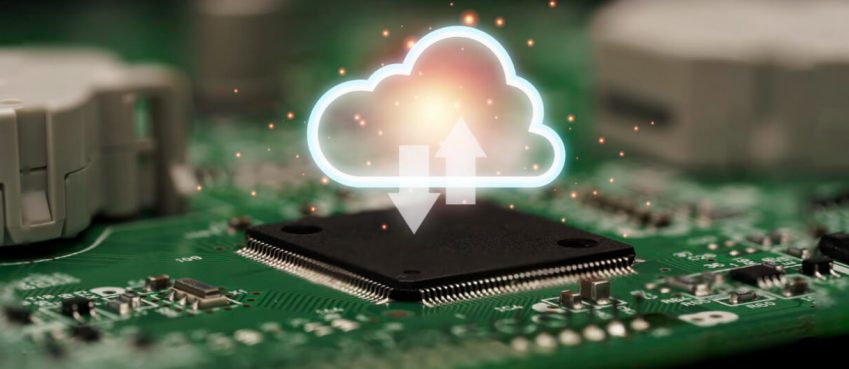
1. Difficulties With Installation
Many inexperienced users have had problems with Linux from the beginning when installing the operating system. Usually, fans of the “penguin” system claim that nothing is more accessible than doing it. But there are nuances.
Ubuntu, Mint, or Fedora installers can automatically place the new system alongside Windows, preserving all the data. But less “polished” distributions are pretty capable of baffling the newcomer with all sorts of “partitions”, “disk partitions”, “superusers,” and “mount points”. Moreover, the system will not provide any explanations or comments.
An inexperienced user can inadvertently delete documents, files, and photos from the disk. After the installation, they will discover that the computer is left with nothing but bare Linux.
And in particularly advanced distributions like Arch, the installation is done through the command line, and without a manual, it becomes very problematic.
In addition, the installers of many distributions are full of all sorts of little problems that constantly spoil your life.
And after completing the installation and rebooting, you find that you can’t enter your newly set user password because it requires the Latin alphabet. This is highly annoying.
Solution. Use the most popular and accessible distributions: Ubuntu, Mint, Fedora, OpenSUSE, or Debian. Read the Linux installation guide before you do anything to your computer. Do not forget to back up your data.
2. A Large Number of Distributions
Windows comes in two versions: Home and Pro. macOS, in general, is one and indivisible. So it is easy to make a choice.
On the other hand, Linux is divided into dozens and hundreds of very different distributions – there are already more than 700 of them. And deciding which one to install is a challenging task.
Arguing about which distribution is better is a favorite pastime of Linux fans.
A newcomer who decides to install Linux can quickly get confused. Besides, choosing exotic distribution with many hidden problems can discourage you from using Linux in the future.
In addition, distributions are often incompatible, and your favorite program in the new system can refuse to work.
Finally, this diversity leads to developers spreading their efforts thinly. Instead of concerting to improve the most popular solutions, everyone tries to build their own Linux “with a boring wallpaper”, only generating fragmentation.
Solution. Same as in point one. Use only the most popular and straightforward distributions: Ubuntu, Mint, Fedora, OpenSUSE, or Debian. Do not switch to less popular and exotic variants because their support and compatibility are inferior to the mentioned mastodons from the “big five”.
Also read: What Is AI Agent? Components, Types, & Methods3. The Lack of A Universal Source of Programs
There is a lot of different software available for Linux. There are many other installation methods.
Most of the applications you need are easy to download: open the store, choose what you need and click “Install.” But sometimes, the appropriate software is not in the repository, and the adventure begins.
Some programs are installed in Snap-pack format, others in AppImage, others in Flatpak, and all this mess peacefully coexist in the same distribution. Such an assortment of forms leads to a situation where the whole system gets clogged with unnecessary files, and even the most straightforward applications start to take up an obscene amount of space.
And if the program you need is supplied with your distribution only in source codes, you will have to build it manually, which is quite tricky for a beginner.
Especially if the author of the software did not provide his brainchild with step-by-step instructions.
Finally, if you want to connect a software repository to your distribution, it may become incompatible when you update the system. Installing some specific old software on Linux is a real challenge.
Solution. Unfortunately, you have to put up with this mess. Or switch to Arch, where even rare software can be downloaded via the extensive AUR repository, and installation is at least somewhat standardized. However, there are plenty of other bugs.
4. The Black Screen of Death
Linux fans are proud that their system does not have blue screens of death like Windows systems. They are delicately silent about “black screens of death” and “kernel panic.”
The problem is manifested: you install the system, reboot, and boom – black screen and blinking cursor in the corner, no reaction to keystrokes.
In case of a “kernel panic,” the system will at least display some hidden text, which you can google if you have time to write it down. There are no handy things like QR codes with error contents like in Windows 10.
Solution. Unlike BSOD in Windows, the black Linux screen, as a rule, does not “hang” the system quite intentionally – it is still possible to call the console and do something with the OS. However, it is much easier to reinstall the distribution and restore the data from the backup in most cases. So again: don’t forget about jams.
5. The Absence of The Google Drive Client
A small thing, but annoying. It would seem that Google is very fond of Linux. The company runs its operating system, Linux, based on Debian. Its brainchild, Chrome OS, is based on Gentoo Linux. Google servers also use Linux.
However, if you open Google Drive, you will be offered to download the client for either Windows or macOS. This is unfortunate.
Solution. If you enter your account details in the system settings, in most GNOME and KDE distributions, Google Drive appears right in your file manager panel and works fine.
The only catch is that you’ll need an Internet connection to be able to edit the contents of the cloud storage – you can’t work without the Network and then get in sync. Those who can’t do this will have to switch to Dropbox, MEGA, and other services with clients for Linux.
6. Absence of A Unified Interface
Unlike Windows and macOS, where the system interface is always the same, Linux offers a very flexible interface with shells or desktop environments. By choosing the right environment, you can make the operating system fast and minimalistic or multifunctional and sophisticated – whatever you want.
Unfortunately, for inexperienced users, this advantage turns into another disadvantage.
First, this variety makes it difficult to explain what to do and how to do it to achieve the desired result. If you have GNOME and your friend has KDE, you can send him screenshots and recordings of your screen as much as you like. He won’t be able to reproduce your actions.
Interface designers in Linux design settings, system menus, and toolbars to their liking, and you can’t expect any common logic from different graphical environments.
Secondly, because of the diversity of interfaces, programs designed for one graphical environment will look like Frankenstein’s monsters in a different shell.
Try to run a KDE distribution application in some GNOME or XFCE, and you quickly get sick just looking at the screen. It looks like a Windows 95-era program in Windows 11 – it works, but it hurts your eyes.
Solution. Designers and people with a keen sense of beauty should not take any chances and continue to use macOS. Suppose the desire to switch to Linux overpowers. In that case, it is worth installing a system with the most “polished” interface, like Linux Mint with Cinnamon or Kubuntu with KDE, and not run on it programs designed for other graphical environments.
Also read: 10 Best AI Music Generator In 2025 (Royalty Free Music Generation)7. Problems With Hibernation
Hibernation is a mode where your computer saves the contents of its RAM to your hard drive and shuts down. It’s a great thing to turn the system on and off quickly.
Unfortunately, the vast majority of Linux distributions have historically had problems with hibernation: it seems to be there, but it is either unavailable or does not work as expected.
Solution. It is possible to enable hibernation in Linux, but you must sweat. The instructions are on the Internet. And if you have a GNOME-based system, you’ll also need to install a particular extension.
8. Lack of Games
It is challenging to recommend Linux to computer gamers. Because of the low prevalence of the system, game developers often prefer not to port their products to Linux because they do not unreasonably think that the process does not pay off. Therefore, a lot of new titles pass by.
Solution. The problems with games are slowly being solved, and it is possible that this OS will become quite a good gaming platform in the future. So, the new Steam Deck from Valve runs on a modified Arch with Proton technology, allowing it to run most Windows games on Linux.
Tools like Lutris and PlayOnLinux perform the same functions. Steam is also available in most distributions for downloading directly from the app store.
9. Lots of Useless Programs
If you download and install Linux Mint, Ubuntu, or openSUSE, you will be met with a menu full of different icons after the system boots. And not all preinstalled applications will be helpful to you.
Why do you need Calc if you do not work with tables? Why integrate formula editors and a database management system if you only want to use your machine to surf the Internet and occasionally play video games?
Finally, why do distribution creators persist in embedding e-mail clients into OSes when most people check their e-mail in a browser?
Another problem is many useless applications in the Linux app stores. Old text editors that haven’t been updated for years, hundreds of sudoku variants, obscure glitchy indie games that nobody plays…
It is unclear why to clog the repositories with so much stupid garbage.
Solution. Fortunately, you can remove almost all preinstalled applications with a single click on Linux. Unlike Windows, which, by the way, it is a bit more complicated.
An advantage of Linux is the so-called minimalist installations. Check this box when you install the distribution, and you get a “barebones” system with nothing but a browser, and everything you need can be easily downloaded by yourself.
As for old unsupported software in the repositories… You must pay attention to package upgrade dates and be more careful about your installation.
Also read: Best AI Gift Ideas Tools & Software To Try In 202410. Lack of Software
Perhaps the biggest obstacle that keeps users and each online essay writer from switching to Linux is the lack of specialized professional applications for the job. Examples, Adobe Photoshop, Illustrator, InDesign, Dreamweaver, Premier, Microsoft Office, Final Cut, Wondershare Filmora, and many more.
All of these programs have free Linux alternatives, but as a rule, they are inferior to the competitors in their capabilities. In addition, it is often too long, energy consuming, and thankless to master the interface of a new tool and retrain, even for a professional.
Solution. If you cannot do without alternative programs like GIMP, Krita, Inkscape, and OpenShot, there are two ways to do it. The first is to run the desired software via Wine. The second is to install Windows in VirtualBox. However, both methods are pretty demanding on your computer’s resources.
11. Problems With Drivers
Linux interacts with more or less popular “gadgets” no worse than Windows. In most cases, you do not have to configure anything – connect the necessary peripherals, and they will work. If this does not happen, you must open the “Driver Manager” (or its equivalent in your distribution), enter the administrator password, and wait for the system to download and install everything.
But if you are the proud owner of some rare or old and unsupported hardware, you are in for hours of fascinating reading of manuals and work with the terminal. In especially severe cases, you must compile the drivers from the archive with the source codes.
For avid Linux fans, this is entertainment, a kind of sport. Such guys just haven’t had enough constructors in their time.
But users who want to get their old ten-year-old printer working are unlikely to find this fun.
Solution. Before you buy any new hardware, google how well it works with Linux.
Top 10 News
-
01
Top 10 Deep Learning Multimodal Models & Their Uses
Tuesday August 12, 2025
-
02
10 Google AI Mode Facts That Every SEOs Should Know (And Wha...
Friday July 4, 2025
-
03
Top 10 visionOS 26 Features & Announcement (With Video)
Thursday June 12, 2025
-
04
Top 10 Veo 3 AI Video Generators in 2025 (Compared & Te...
Tuesday June 10, 2025
-
05
Top 10 AI GPUs That Can Increase Work Productivity By 30% (W...
Wednesday May 28, 2025
-
06
[10 BEST] AI Influencer Generator Apps Trending Right Now
Monday March 17, 2025
-
07
The 10 Best Companies Providing Electric Fencing For Busines...
Tuesday March 11, 2025
-
08
Top 10 Social Security Fairness Act Benefits In 2025
Wednesday March 5, 2025
-
09
Top 10 AI Infrastructure Companies In The World
Tuesday February 11, 2025
-
10
What Are Top 10 Blood Thinners To Minimize Heart Disease?
Wednesday January 22, 2025







